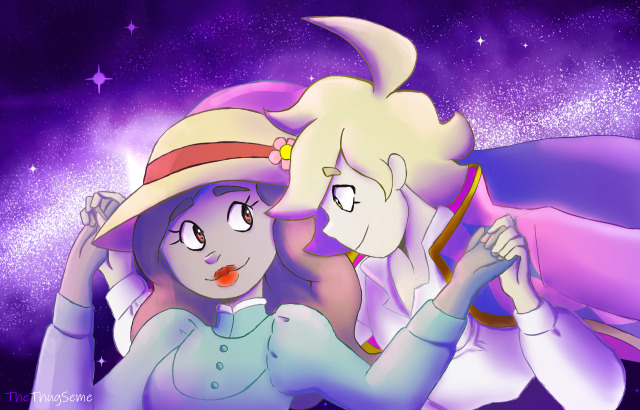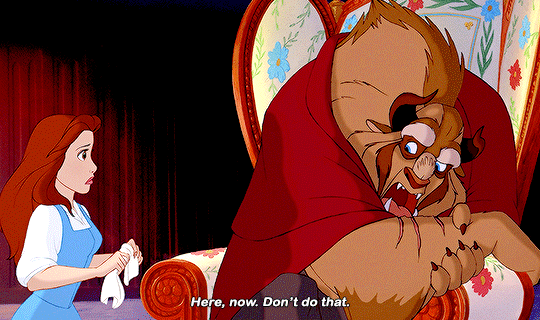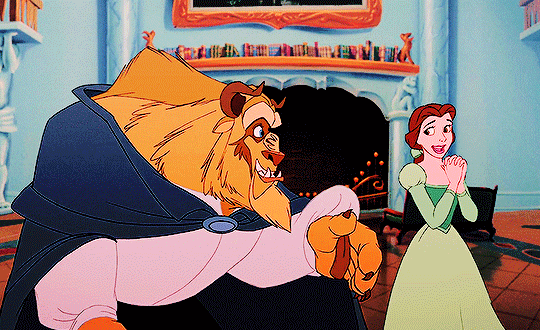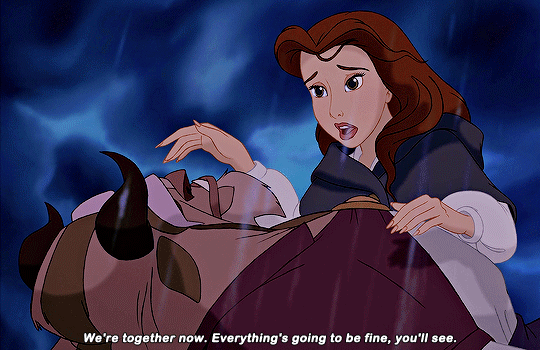#love interest

A redesign of Liam Herl, Rhëa’s canon love interest ♥
I don’t understand why it’s so hard for authors to write a boy best friend character who’s only that. Why does he always have to end up falling for the main girl?
WhAT?!

This is Illegal

My Pansexual ass cannot handle this


I have drawn Tsuki with her love interest Olive!
Tsuki is a the shortest character in my story which she doesn’t like but she still loves Olive dearly… even tho she has to tippy toe just to try and kiss her ^^
I’ve drawn my OC Tsuki and her unnamed GF. Hope yall like her!

I have drawn Tsuki and Olive as Howl and Sophie! I hope y'all enjoy


Happy Late Valentine’s Day! Here is a picture of TsukiandOlive. My two little lovebirds ❤


Quinceañera de Corazana

I’ve talked before about how to write a likable asshole love interest in another post, but in that post, I was more dissecting why it works for some characters, and not for others. But I didn’t really talk about the step-by-step process to pull a Frankenfurter and build a man worth drooling over. This process of course can also apply to icy bitch love interests, but the repugnant male is more common.
This is a bit of a two-for-one, cuz it’s also a bit of a walkthrough for Enemies to Lovers, but we’re more focused on building the Jerk Love Interest. It just so happens that doing so also helps with writing a slow-burn romance.

Step 1: Find the Source
Generally speaking, most people are not horrible jerks in a vacuum. Their horribleness stems from something, but so too does their good side. I covered this when talking about Zuko and how to write a redemption arc, but since that applies to this trope as well, I’ll cover it again.
- The Ghost - Also called “The Scar”, this was a defining moment in the character’s backstory that happened before the story proper that defined who they became. This is the source of the trauma from whence the bastard sauce flows. For Zuko, it was the literal scarring of his face for questioning an adult, being banished by his own father, and the subsequent loss of honor. For Amity, it was being forced to stop being friends with Willow by her parents. For Bakugou, his Ghost is a mixture of teachers and adults inflating his ego as a small child, and implications of physical and/or verbal abuse from his parents that shaped his ‘Might makes Right’ world view. This is the one thing I forgot to mention in the Zuko post, so I’m glad I got a chance to include it here.
- The Want - This is simply put, what the character wants. Zuko wants his honor back. He doesn’t care how he gets it, just that he gets it. If he didn’t have to bother a twelve year old for his want, I doubt he would have even glanced at the Avatar if it wasn’t related to his motivation. Amity aspires to join the Emperor’s Coven, maintain her status as valedictorian of Hexide, and keep her parents happy. Bakugou wants to be the Number 1 Student, eventually become the Number 1 Hero, and All-Might’s successor. I haven’t been keeping up with the manga, so idk if his ambitions have changed since his character development, but we’re focused on the starting point. This is what motivates your rancid romeo at the start of the story.
- The Need - This is what the character requires to complete their arc. There are two types of Needs. A cooperative need is a need that feeds into the want. It’s like a step ladder to get the character from point A to point B. The other type is a combative want. This requires the character to either have a major change of self or even an entire change of want in order to be satisfied. In the simplest terms, in a cooperative need, the need leads to the want, in a combative need, the want leads to the need. Zuko Needs to determine his own destiny instead of living for other people, and to realize that nobody can take his honor away from him except himself by his own actions. Amity Needs to realize that she doesn’t have to be who her parents want in order to have a successful life, and she’s more than capable of determining who her real friends are. Bakugou Needs to realize not only that there’s more to life than being #1, but that other people are not inferior to him just by virtue of their quirks or aspirations in life. With each of these examples, the Need is combative. As an example of a Cooperative Need, I wrote a character who wanted to be respected by her peers. She believed they didn’t respect her because they saw her as weak, so she becomes determined to prove she’s not a pushover. In truth, they didn’t respect her because of her flighty and impulsive behavior causing problems for them. Her Need, to realize that her actions have negative impacts on those around her, directly feeds into and leads to her Want, to be respected by her peers. While the combative need is clearly still more common in rancid romeos, I still figured it was worth making sure people had an example of both.
- The Lie - This is the faulty belief held by the rancid romeo about how the world works, their place in the world, or who they truly are. For Zuko, he believed that he lost his honor. That only capturing the Avatar can restore his honor. In truth, his honor was always there, and Zuko always chose the honorable path when given the choice. Amity believes that hard work, good grades, and results are what matters. So when somebody cheats to get ahead, Amity takes this very personally because it violates her world view, causing her to act more hostile to Luz and Willow. Bakugou believes that he is the single greatest fledgling hero ever, so when he gets to UA and sees Todoroki freeze an entire building, he has an existential crisis that results in a one-sided rivalry, wherein beating Todoroki is the only way to prove to himself that he IS in fact the best fledgling hero in the world, and he can return to his previous world view assured of his own supremacy.
- The Truth - Just as it sounds, the Truth is the cure to the Lie. Whatever misgiving the rancid romeo has about how the world works, their place in the world, or who they truly are, can be resolved by realizing the truth. The Truth manifests in the story as that sort of A-ha! moment for character. It’s the moment when they come to understand where they went wrong, and resolve to change. The Truth marks the epiphany, and the transition from Want to Need in the Arc. For Zuko, the Truth moment comes when Zuko confronts his father on the Day of Black Sun and tells him to eat a dick for being a shitty father, and he’s gonna run away and join a Gaang. For Amity, the Truth is a gradual thing, but comes the most clearly in the moment when she and Luz get trapped in the library. Up to that moment, Amity couldn’t really figure Luz out, and she began to realize her own actions weren’t exactly honorable either. After this episode, we start to see a quiet, distant, and reflective Amity who’s clearly rethinking her values. For Bakugou, the Truth really comes to a head when he discovers that Midoriya will inherit All-Might’s quirk and be his successor. I’m not caught up on the Manga, so while I’m aware that Bakugou has started to really apologize to Deku and is starting to work on redeeming himself, I’m not up to date on Bakugou’s redemption arc. However, one could argue Bakugou’s first Truth came when he saw Todoroki freeze an entire building, had an existential crisis, and then realized he was just a big fish in a little pond, and his poor little ego starts lashing out violently because he doesn’t know how to respond to this shift in his world view. He’s not the greatest thing since sliced bread, and he’s not sure what to do about it.

Step 2: A Beastly Start
Beauty and the Beast lives and breathes on this trope, and this first step is why. Beauty and the Beast bases its entire story on how appearances can be deceiving and first impressions don’t always paint the whole picture. In order to write a successful Jerk Love Interest, the romantic lead AND the audience both need to see the love interest in a negative light. The love interest needs to really get off on the wrong foot with both the romantic lead and the audience. Nothing about them should be romanticized or made to be sexy. Because that’s not supposed to be the romantic lead’s first thoughts. Kirishima dismisses Bakugou as a mindless brute, Luz is too busy being angry that Amity is a bully to notice how cute she is, Emma immediately sees through Hook’s lies and leaves him to be eaten by ogres, and Sansa is literally afraid of the Hound when she first meets him. A meet-cute, this couple is not. Sometimes, the romantic lead and the audience meet the love interest at different times. Bakugou is introduced as a deuteragonist to main character, Midoriya, and immediately sets himself up as a colossal shit weasel. But once he gets to UA, he repeats this character establishing behavior on day 1 to ensure that everyone in the class (Kirishima included) is completely convinced that this man is made of 100% rotten bastard sauce. However, while you want your rancid romeo to be disliked at first, you do eventually want your romantic lead and audience to warm to them. To do that, the rancid romeo can’t cross the line to hardcore villainy. Anything that would warrant a trigger warning should be immediately discarded as not viable. Some rancid romeos can get away with more severe bastardness, as long as it’s not directed at the romantic lead. Bakugou probably starts off the worst of the characters I’ll use as reference, as in the English Dub, he tells the hero to kill himself. Needless to say, Bakugou started off extremely unpopular as a result, and many (but not all) fans dislike pairing Bakugou with Deku because of this past toxic bullying behavior. But while Bakugou was a horrible bully to Midoriya, the protagonist, he was only ever really surly and unpleasant with Kirishima in their first few encounters, but he’s not a bully to Kirishima like he is to Midoriya. Kirishima’s first impression of Bakugou is that Bakugou is a crazed maniac and he’s intent on killing their fellow classmate in what’s supposed to be a simple drill. Not exactly a swoon-worthy first impression.

Step 3: The Beauty Within
This is the first glint of any goodness in the character. Sometimes this is more overt, like when Luz finds Amity reading to children, but often the first glimmer is smaller. Easy to miss, even. When Sandor Clegane wraps his cloak around Sansa, he does so without being asked. He is simply acting on his personal code of honor. We the audience don’t think much on this because we would assume most people in this situation would do that. So it’s no big deal, right? But then, you look at Sandor’s character and it becomes sort of strange. Why would someone so blunt, harsh, and bitter be so quick to do the noble and just thing like that? It’s sort of sneaky until the audience stops to think about it. Amity comes to understand Luz when Luz explains how hard she has to work to learn even really basic spells, and Amity, for all her ego, respects the work that Luz has to put in and undoes the binding ritual that would have forced Luz to stop learning magic. Bakugou actually has two first glimmers. The first is right before he’s attacked by the sludge monster. His friends are trying convince him to sneak into a bar and hit on chicks, and Bakugou immediately shuts it down because getting caught could hurt his academic future. Bakugou might run on Bastard Juice, but it’s Ambitious Bastard Juice. Like with Sandor, it’s an easy enough detail to overlook on a first viewing, but really shows what Bakugou values on further reflection. The second glimmer comes when Bakugou and Kirishima get to really interact with one another for the first time. When they get paired off during the USJ Attack, Bakugou doesn’t seem concerned with helping his classmates, focusing more on stopping the villains that have infiltrated the event. While again this seems to be cold and selfish, Kirishima realizes that what Bakugou’s not saying is that he’s not really worried about his classmates being in danger because he believes they can genuinely fend for themselves. It’s a round-about show of respect that Bakugou doesn’t think his classmates need him to rush in with a rescue. And that first spark of heroism and nobility inside of Bakugou is what convinces Kirishima to actively pursue a friendship with this abrasive and vulgar dumpster gremlin. This is the single most important step because this is what makes the asshole likeable. Bakugou may be many things: foul-mouthed, egotistical, narcissistic, elitist, and a bully, but Bakugou also has respectable qualities too. He’s a hard-worker, he believes in earning what you have, and doesn’t believe in cheating or shortcuts. In spite of all of his rotten traits, he has some damn respectable qualities as well, and this is merely the first chance to let the audience and romantic lead see a quick peak of this inner kindness. Likewise, Sandor Clegane is vulgar and cynical, but he kneels before his king, holds Sansa back from making a choice that would get her killed, and saves Sansa from being assaulted by a group of men. He may be surly, but he is also noble and honorable. Same with Zuko. He may be angry and selfish, but he keeps his word and makes honorable choices when given the chance. From this point in, use the blossoming relationship to expand upon this first spark, and turn the preview into a full display. This is the moment to show the audience and romantic lead that there’s more to the rancid romeo, and once they’ve seen that sneak preview, you’ve got to deliver more good qualities as we get to know the rancid romeo better. A sliver of good that never expands or shines any brighter is not a compelling rancid romeo, because eventually, the rancid part does need to lessen. Maybe not go away, sometimes that abrasiveness or jerk nature is part of a character’s charm, but by story’s end, they should be less of a jerk. Defecting to the good side doesn’t suddenly make Zuko any less of an awkward moody guy, it merely gives him a positive support system wider than just his amazing uncle. I mean, Zuko makes the gaang tea and tries telling them a joke. Seasons 1 and 2 Zuko never would have tried to tell anyone a joke, and the only other person he ever made tea for was his uncle.

Step 4: An Act of Kindness
Now that your rancid romeo has displayed some level of inner goodness or a trait worthy of admiration, it’s the romantic lead’s turn to make the first move. This is because while the rancid romeo is capable of kindness and love, they’re usually too damaged to make the first move. Thus, the romantic lead must take the first step forward and reach out to the love interest. This comes in varying stages depending on the story. After Covention, Lost in Language has Luz hoping that she and Amity can become friends, and she even protects Amity from a cruel prank by her older siblings. By episode’s end, Amity and Luz aren’t friends per se, but they understand each other better than they did before, and Amity really starts to rethink how she views not only Luz, but herself as well. After the USJ attack, Kirishima reaches out to Bakugou during the Sports Festival Arc, volunteering to be Bakugou’s teammate, and when Bakugou calls him a mean nickname, Kirishima merely corrects him. In the simplest terms, this is the moment when the romantic lead extends the olive branch to the love interest and offers to shift the dynamic from angsty stranger with a secret heart of gold to tentative friendship with a shaky foundation.

Step 5: A Kindness in Turn
Now that the romantic lead has made a gesture to the damaged goods that is the love interest, they need to react appropriately and return the favor. Two characters in a relationship are effectively in a dance together. If only one person is doing all the work while the other person stands there like a log, that’s not really two partners in motion. To truly perform the dance of love, both the romantic lead and the rancid romeo must give and take, and this is when it’s the love interest’s time to take the lead in the dance. Failure to meet this step means that your ship cannot and should not hit any stage after it, as a rancid romeo who never does anything for the romantic lead is not appealing. It doesn’t even need to be something big. Bakugou’s kindness in turn for Kirishima is just offering to tutor him. It’s hardly a grand romantic gesture, but considering Bakugou doesn’t tutor anyone else and doesn’t really like most people, it says a lot that Bakugou would even bother taking the time to help another student with their studies.

Step 6: There’s Something There
Now that both your romantic lead and your rancid romeo have made an effort to do things for each other and bond, we formally shift from two awkward acquaintances to legitimate friends. If the dynamic is more straight from Enemies to Lovers, then either this stage is skipped entirely, or instead of friendship, this stage is full of playful banter, snarky compliments, and the beginning stages of a crush. As both characters have now found something in the other worth admiring or being interested in, this stage serves to deepen the bond before the actual romantic elements start to seep into the relationship. This could be as significant as having a heartfelt talk about deeply seeded trauma, or as simple as grabbing a beer after work. This can also be the point when past traumas are worked through, such as taking down emotional walls, or being supportive of each other’s goals.

Step 7: Romance Starts to Blossom
Once the pair have started to enjoy each other’s company and found things to respect or admire in each other, all of that time together will eventually lead to romantic feelings starting to form. This is the stage when crushes comes into play. Longing gazes, stolen glances, blushing and flustering, romantic tension. It all builds up to one thing: Puppy Love. While friendship is not a mandatory step in the Enemies to Lovers trope, it can be useful as a bridge from begrudging respect to genuine admiration. In the case where Enemies to Lovers is spicy and heated, such as the relationship between Anthony and Kate in season 2 of Bridgerton, this is the stage when they start to realize and/or admit their growing attraction to one another. For Lumity, we see Amity catches feelings first by constantly blushing around Luz, but Luz does start to reciprocate those feelings, leading up to both girls trying to ask each other out.

Step 8: An Act of Love
This is the point in the story when the rancid romeo reaches the Aha! epiphany moment of their redemption arc, and transitions from Want to Need. This is the moment when they realize they were wrong and make a grant gesture. As not all love stories are romances, it doesn’t necessarily have to be an act of love or a grand romantic gesture, it can also be a grand gesture given their personality. Bakugou accepting Kirishima’s hand in Kamino or giving him the pep talk needed to realize Red Riot Unbreakable are two key moments for the Kiribaku ship because Bakugou is displaying uncharacteristic trust and interest in someone other than himself. As such, Bakugou accepting help from Kirishima and bothering to encourage Kirishima to rise above his insecurities are massive things for Bakugou. For Amity and Luz, the big moment came when Amity stood up to her own mother to protect Luz, as fearing her mother is a huge part of Amity’s trauma and issues. However, unlike step 7 which can only exist after steps 3-6, step 8 can really happen at any point. This is merely the turning point in the rancid romeo’s personal arc, and in some romances, the rancid romeo needs to reach this turning point before step 6 or 7 can even happen. Many Zutara shippers would argue that Zuko and Katara’s relationship would fall under this purview, as either of them having any romantic feelings for each other would only be possible after Zuko defected to the good side and turned against his father. However, the Act of Love doesn’t have to be the same thing as their personal turning point. Zuko’s turning point (defying his father in Day of Black Sun) is distinct from Zuko’s act of love (helping Katara avenge her mother in The Southern Raiders). Likewise, Bakugou’s act of love (accepting Kirishima’s hand in Kamino) is distinct from his turning point (apologizing to Deku for being such a shithead).

Step 9: True Love
Now that the rancid romeo has made a noble sacrifice and faced a major hurdle in their redemption arc, they’re finally ready to receive and return the love of their romantic lead. They have overcome the source of their trauma and grown to properly understand their own thoughts and emotions to better display and act upon their own feelings honestly. They are finally in a good place to truly love and be loved by another. It is worth keeping in mind that love and attraction are not the same thing. Romance blooming in step 7 is more the baby steps. The crushing and the blushing and the awkward glances. This is the real deal. True love. I’m talking one person’s brushing their teeth while the other’s on the toilet level of comfort with each other. They have truly come to understand and appreciate one another on a level so intimate that they support and care for one another unconditionally. By this point in the story, the Rancid Romeo’s redemption arc is almost certainly finished. They’ve gotten closure on their baggage, and have the emotional and mental capacity to give their partner the love and affection that they deserve. It is only by this point (except in the case of arranged marriage narratives) that Married Ever After and/or Babies Ever After can even be considered as a possible ending to the romantic storyline for the characters.
How do you choose between two love interests because I’m struggling what am I supposed to look for ? What makes one better than the other ? Help me ??

